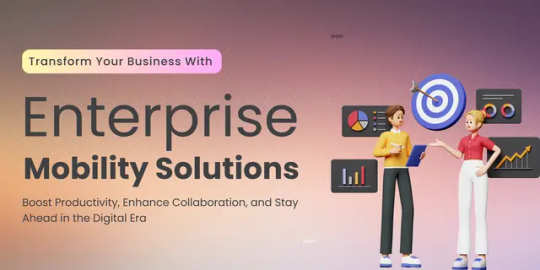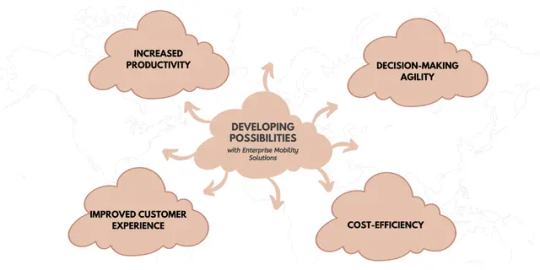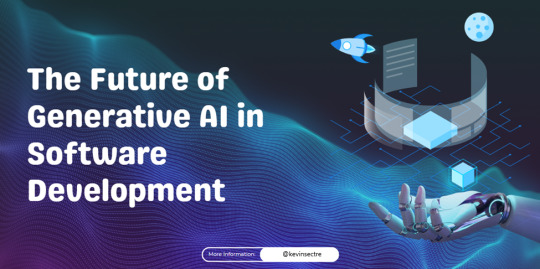Text
Ensure Optimal Performance with ReactJS Support & Maintenance

Guarantee the continuous smooth operation of your ReactJS application with reliable support and maintenance services. Hire dedicated ReactJS developers.
0 notes
Text
Get Started with Python Development Today

Discover why Python is the perfect choice for your next development project. Hire experienced Python developers that can help you unlock the full potential of this versatile language.
0 notes
Text
Want a hi-tech farm but don't know the tech stuff? We got you! Web & apps bring your farming dreams to life. Read & get started with Farming app devlopment!
0 notes
Text
The trend of yoga moving from studios to mobile devices is exciting! With this guide, you'll learn how your app can accommodate the growing demand for mobile yoga experiences. Don't miss out on the mobile yoga revolution!
0 notes
Text
Navigating Mobile App Development Budgets: A Comprehensive Guide Based on App Types

Intro
Welcome to our comprehensive guide on understanding mobile app advancement budgets based on different app types. Whether you're a startup, a business owner, or an entrepreneur aiming to develop a mobile app, it's essential to understand the budget plan ramifications for various kinds of apps. In this guide, we will explore the intricacies of budgeting for native apps, hybrid apps, and web-based apps. By the end of this journey, you will have acquired valuable insights into the budgeting considerations specific to each app type, empowering you to make informed choices for your mobile app advancement jobs.
Area 1: Exploring Various Kinds Of Mobile Apps
When it pertains to mobile app development, it's vital to understand the different kinds of apps that exist in the digital landscape. These include native apps, hybrid apps, and web-based apps. Each type has its special qualities and functions, dealing with varied user needs and choices.
Native apps are particularly developed for a particular platform, such as iOS or Android, utilizing platform-specific shows languages and tools. They are understood for delivering high performance and offering seamless user experiences customized to the platform's requirements and guidelines.
Hybrid apps, on the other hand, integrate elements of both native and web applications. They are developed utilizing web technologies like HTML, CSS, and JavaScript and then encapsulated within a native container, permitting them to be released across numerous platforms.
Web-based apps, also known as progressive web apps (PWAs), are basically websites that are created to look like native mobile apps. They offer the benefit of being accessible on any device with a web browser without the need for installation from an app store.
Comprehending the differences between these app types sets the stage for making notified budgeting choices that line up with the particular requirements of your mobile app task.
Area 2: Factors Affecting Mobile App Development Budget Plan
Numerous crucial factors can considerably impact the budget for developing a mobile app. These aspects consist of the app's complexity, preferred features, design aspects, and platform compatibility.
The complexity of an app refers to the intricacy of its performance and the technical challenges associated with its development. More complicated apps frequently require extra resources and proficiency, which can affect the total budget plan.
The features integrated into an app play a vital role in determining its development expense. Advanced functions such as real-time messaging, geolocation services, and augmented truth performances can add to greater advancement expenditures.
Design is another important element that impacts the budget. A well-crafted, visually appealing style enhances user engagement but may incur higher style and advancement costs.
Platform compatibility is a considerable factor to consider, particularly for native app advancement. Supporting numerous platforms, such as iOS and Android, can contribute to the general spending plan due to the requirement for platform-specific advancement and testing.
To show the impact of these elements, consider the example of a social networking app. A social networking app with detailed functions like real-time messaging, image and video sharing, and complicated user interactions would require higher development costs compared to an easier utility app with fundamental functionalities.
Real-world examples and anecdotes can supply valuable insights into how these aspects manifest in actual mobile app advancement tasks, using practical viewpoints on budget plan factors to consider.
Section 3: Budgeting for Native Apps
Native apps have actually long been favored by developers for their capability to provide optimum performance and seamless user experiences. Nevertheless, the cost of developing native apps can vary considerably based on numerous aspects.
Typically, the expense range for establishing native apps starts from several thousand dollars for simpler apps and can escalate to hundreds of thousands for more complex and feature-rich applications. Elements such as the app's intricacy, desired functions, and style intricacy contribute to this extensive cost spectrum.
When budgeting for native app development, it's essential to focus on functions based on their value to the app's core performance. This technique assists in designating resources effectively and prevents unneeded expenses on non-essential features.
Moreover, engaging with knowledgeable app developers and seeking several quotes can provide a clearer understanding of the budget needed for native app advancement. It's essential to describe particular requirements and expectations to receive precise budget price quotes from advancement firms or freelancers.
Section 4: Budgeting for Hybrid Apps
Hybrid apps provide a cost-effective option to native app development, leveraging web innovations to develop cross-platform applications. As a result, the budget plan factors to consider for hybrid app development vary from those of native apps.
The idea of hybrid apps revolves around the idea of developing a single codebase that can be released throughout several platforms. This technique often equates to expense savings, as designers can compose and keep one set of code for both iOS and Android platforms, reducing the overall advancement effort and time required.
When budgeting for hybrid app advancement, it's important to consider the compromises in between expense efficiency and performance. While hybrid apps provide advantages in regard to development costs, they might not constantly match the performance capabilities of native apps, especially for highly complicated or resource-intensive applications.
To make educated options when assigning budget plan resources for hybrid app tasks, it's recommended to assess the particular requirements of the app and evaluate whether the expense savings connected with hybrid development line up with the preferred efficiency and user experience requirements.
Area 5: Budgeting for Web-Based Apps
Web-based apps, or progressive web apps (PWAs), have acquired prominence for their flexibility and ease of access throughout various devices with web internet browsers. When it pertains to budget plan considerations, web-based app advancement provides unique advantages compared to native and hybrid app advancement.
One of the main cost-saving aspects of web-based app advancement is the capability to build and keep a single codebase that works across various platforms and devices. This structured approach can lead to significant cost savings in advancement expenses as it gets rid of the need for platform-specific advancement efforts.
Additionally, the deployment and distribution of web-based apps do not include the complex app store approval processes related to native apps, possibly decreasing time-to-market and associated costs.
Emphasizing the potential expense savings and return on investment opportunities with web-based app advancement can provide important insights for businesses and entrepreneurs aiming to maximize their spending plan allotment for mobile app jobs.
Conclusion
In conclusion, comprehending the budget plan implications for various types of mobile apps is necessary for services and entrepreneurs starting the mobile app advancement journey. By checking out the unique attributes and budget plan considerations for native apps, hybrid apps, and web-based apps, stakeholders can make educated choices that align with their task requirements and budget plan restraints.
As you navigate the complexities of mobile app development budgets, think about the specific requirements and goals of your job and utilize the insights shared in this guide to develop a budget strategy that sets the stage for a successful app development endeavor. Whether you select a native, hybrid, or web-based technique, the secret to efficient budgeting depends on aligning your resources with the core objectives of your mobile app project.
0 notes
Text
Optimizing Business Prospects: An Overview of Enterprise Mobility Solutions

Enterprise mobility solutions improve productivity, agility, and teamwork, and are a critical business success accelerator. We explore the complexity of these solutions in our article, highlighting their importance and offering suggestions for maximizing business opportunities.
What are enterprise mobility solutions, and what exactly makes these solutions important in the modern business environment?
Enterprise Mobility Solutions (EMS) describes a collection of resources, processes, and strategies that enable businesses to improve workforce efficiency, optimize operations, and promote smooth mobility. Adopting workplace mobility is more than a trend in this era of digital transformation—it's a strategic necessity.
Why are enterprise mobility solutions important in modern business world for businesses?
Businesses need enterprise mobility solutions (EMS) because they improve labor productivity, operational efficiency, and mobility in general. Adopting mobility is a strategic imperative in the digital age, as it allows for speedier answers to customer requests and market movements by eliminating the limitations of a fixed office environment and providing real-time connectivity.
What components make up a successful enterprise mobility solution?
Essential Elements of Business Mobility Solutions
Mobile Applications:
Custom mobile applications made to fit certain business requirements are the foundation of EMS. These programs can be internal applications or customer-facing programs, all of which enhance user experience and boost productivity.
Mobile Device Management (MDM):
MDM makes ensuring that mobile devices are used safely inside of a company. Through its control, monitoring, and management capabilities, IT administrators can guarantee data security and adherence to corporate regulations.
Mobile Security:
With the current mobile-first business environment, cybersecurity is critical. Effective safety measures like encryption, multi-factor authentication, and secure data transmission are all included in enterprise mobility solutions to protect sensitive data from outside threats.
Cloud Integration:
Data may be stored and accessed from different devices and places thanks to cloud integration. This promotes improved decision-making by strengthening teamwork and guaranteeing that workers have access to the most recent information.
Challenges and Solutions in Enterprise Mobility
What obstacles or challenges can organizations face when putting Enterprise Mobility Solutions into practice, and how might these hurdles be resolved?
Security Concerns:
There are security issues with the growing usage of mobile devices. Businesses should make significant investments in strong cybersecurity measures, such as frequent upgrades, encryption procedures, and staff training on security best practices, to solve this.
Integration Issues:
There may be obstacles to a smooth integration with current systems. To ensure a seamless transition, integration issues can be minimized by implementing a phased approach and selecting scalable solutions.
User Resistance:
It's normal to be resistant to change. Offering thorough training, highlighting the advantages, and incorporating staff members in the decision-making process can assist in overcoming opposition and promoting a favorable attitude toward mobility solutions.

Developing possibilities for business with Enterprise Mobility Solutions
In what ways may companies optimize the growth opportunity offered by Enterprise Mobility Solutions?
Increased Productivity:
Productivity skyrockets when workers can work from anywhere. A more productive workforce is a result of real-time collaboration, global access to vital information, and task completion dependability.
Improved Customer Experience:
Mobile solutions have the power to completely change how customers engage with businesses. Businesses may increase consumer pleasure and loyalty through mobile applications, which offer smooth purchasing experiences and rapid support.
Decision-Making Agility:
The decision-makers have power when they have access to real-time data. Management are able to adapt to shifts in the market with flexibility and promptness, regardless of whether they are in an office or on the move
Cost-Efficiency:
The long-term cost reductions from mobility solutions balance the heavy initial expenditures. Overall cost-effectiveness is influenced by less need for office space, lower travel costs, and increased operational performance.
Key Take Away
Enterprise mobility solutions are a strategic requirement for companies hoping to prosper in the digital era, not merely a passing fad. Organizations can achieve unparalleled growth and maintain a competitive edge by surmounting obstacles, adopting essential elements, and maximizing their use. Adopting Enterprise Mobility Solutions is a significant step toward a more agile, connected, and lucrative future in the fast-paced company world.
0 notes
Text
White-label on-demand consultation marketplaces can strategically impact your online business and help it transform. Discover the features that guarantee strong user profiles, safe payment processing, and customized branding. Find out why using this platform is a dependable strategy to win over clients' confidence and loyalty.
0 notes
Text
Harness your potential by beginning your own internet business consultancy. A road map for identifying your niche, comprehending consumer demands, building your brand, deciding on offerings and costs, and putting successful marketing tactics into practice is provided by this guide. Take advantage of the chances in the rapidly developing world of online consulting!
0 notes
Text
Step into the digital revolution of video conferencing. Explore the key attributes, prices, and technological advancements influencing the video chat applications development by clicking. Now is the time to transform your communication approach!
0 notes
Text
Explore how the bigger forces of technology are transforming hospitality. Click to learn more about AI developments, strategic integrations, and how technology is starting to serve as the foundation for corporate innovation!
0 notes
Text
Launch your business into the on-demand future! Learn the secrets of building a successful app.

Whether you have a unique service or want to give a classic twist, this blog is your roadmap to on-demand app success. Discover key components, marketing strategies, and expert tips to turn your idea into a thriving business.
Click here to read the complete blog.
0 notes
Text
Fuel Business Growth: White-Label Consulting Marketplace
Staying beforehand of the competition often approach getting access to the proper expertise at the proper time. The need for sound advice and specialized know-how is more tremendous than ever, and that's in which on line consulting structures and consulting market answers come into play. This article will manual you through the benefits of those systems and introduce an enterprise-leading white-label consulting market solution.

1. The Power of Online Consulting Platforms
In the current digital landscape, establishing a physical presence is now not a prerequisite for effective uset interaction. Online consulting systems represent a modern shift for organizations aiming to provide specialized recommendation and consulting offerings. These systems facilitate specialists in transcending geographical barriers and achieving a global audience.
1. Expanding Your Reach
Online consulting structures act as a liberating pressure, allowing groups to overcome geographical constraints. The capability to connect to customers international opens up new avenues, allowing groups to tap into diverse markets and domesticate a vast consumer.
2. Cost-Effective Solutions
The monetary blessings of online consulting structures are significant. By disposing of the want for physical office areas and reducing overhead costs, these systems offer a cost-powerful method of handing over services. The financial savings generated can then be strategically reinvested to foster enterprise boom and improvement.
2. White-Label Solutions: What Are They?
White-label solutions offer organizations the opportunity to logo and customize a product or service evolved via a 3rd-party provider as though it were their personal. In the context of consulting marketplaces, this implies the potential to set up a customized and branded platform without undergoing the exhausting and useful resource-extensive improvement procedure.
1. Brand Consistency
Maintaining logo consistency is paramount in organizing a robust marketplace presence. A white-label answer ensures that your consulting platform aligns seamlessly together with your emblem's identity, fostering a cohesive and recognizable image on your commercial enterprise.
2. Time and Cost Savings
The prospect of building a platform from scratch can be a frightening undertaking, consuming great time and monetary assets. White-label solutions provide a pre-packaged, prepared-made platform, ensuing in vast time and cost savings for corporations, without compromising on high-quality or functionality.
3. Choosing the Right White-Label Consulting Marketplace Solution
Selecting the correct white-label consulting marketplace answer is essential for ensuring it aligns together with your enterprise's precise desires and choices. Several factors must be taken into consideration at some point of this system.
1. User-Friendly Interface
A consumer-pleasant interface is a foundational element of any a hit platform. It ought to be intuitively designed, ensuring ease of navigation for each consultant and clients. This enhances the general user experience and promotes engagement.
2. Customization Options
The capability to personalize the platform is crucial for it to resonate with your logo and meet particular business necessities. Look for solutions that provide flexibility in branding and functionalities, permitting you to tailor the platform to your specific needs.
3. Security and Privacy
Ensuring the security of sensitive statistics and preserving client privateness is non-negotiable. A sturdy white-label answer has to incorporate superior security features to guard towards ability threats and breaches, instilling confidence in each expert and clients.
4. Scalability
Businesses are dynamic entities that could enjoy growth. It is vital to pick a white-label solution this is scalable, able to expanding alongside your enterprise. This guarantees that the platform stays effective and applicable as your business evolves.
5. Support and Updates
Staying abreast of the modern-day traits and technology is crucial within the rapid-paced virtual landscape. Choose a white-label answer issuer that offers ongoing help and regular updates, ensuring that your platform remains cutting-edge and aligned with enterprise standards.
4. Recommendation: The Best White-Label Consulting Marketplace Solution
Following meticulous evaluation, our pinnacle advice for a white-label consulting marketplace answer is "Xpertchats". This platform excels in offering a consumer-pleasant interface, sizable customization options, sturdy security features, scalability, and consistent assist and updates.
By deciding on Xpertchats, you are making an investment that empowers your employer with enterprise-leading statistics, seamlessly connecting you with clients and experts on a worldwide scale. This preference ensures a strategic mixture of generation, user revel in, and brand alignment for your consulting endeavors.
________________________________________
Frequently Asked Questions (FAQs)
What is the advantage of the usage of a white-label consulting marketplace answer?
A white-label answer permits you to have your branded consulting platform, saving money and time on development.
How do online consulting systems extend reach?
Online consulting systems permit you to connect with clients globally, breaking unfastened from geographical constraints.
Why is believe essential in consulting marketplace answers?
Trust is vital as customers are more likely to believe specialists indexed on reputable market platforms.
What customization alternatives have to I search for in a white-label answer?
Look for options to customize the platform's branding, user interface, and capability to fit your commercial enterprise desires.
Why is ongoing support and updates crucial for a white-label solution?
Ongoing aid and updates ensure your platform stays updated and secure, preserving your commercial enterprise aggressive.
Empower your consulting enterprise with the right equipment and systems, and watch your expertise attain new heights.
0 notes
Text
The New Era of Digital Transformation in Business

In today's digital age, businesses are experiencing a profound transformation that goes beyond mere technological advancements. Digital transformation has become a crucial shift that is reshaping how companies operate and deliver value to their customers. In this article, we will explore the various aspects of this new era of digital transformation and understand how it is revolutionizing business practices. From the influence of artificial intelligence to the impact of the Internet of Things, we will unveil the intricacies and possibilities that this era brings.
Introduction: Embracing the Digital Age
We find ourselves in an era where every industry is undergoing significant changes due to the rapid advancements in technology. To stay relevant and competitive, businesses must adapt to this digital landscape. But what exactly is digital transformation, and how is it reshaping the business world? Let's begin by defining this concept.
Defining Digital Transformation
Digital transformation is more than just technology adoption; it involves a fundamental change in how businesses function and provide value to their customers. It is a strategic shift that leverages the power of technology to enhance processes, improve customer experiences, and drive innovation.
The Historical Evolution
To grasp the new era of digital transformation, we must first understand its historical evolution. We have come a long way since the early days of the internet and witnessed the integration of digital solutions in our lives.
Key Drivers of Digital Transformation
Digital transformation is propelled by several factors, including changing customer expectations, globalization, and the need for agility. We will delve into these key drivers and explore their impact on businesses.
The Role of Data and Analytics
Data forms the foundation of digital transformation. We will explore how businesses utilize data and analytics to make informed decisions, optimize operations, and gain a competitive edge.
Transformative Technologies: AI and ML
Artificial intelligence and machine learning are at the forefront of digital transformation. We will uncover how these technologies are reshaping industries and offering new possibilities.
IoT's Impact on Business
The Internet of Things (IoT) is connecting devices and revolutionizing industries. We will discuss how IoT is transforming businesses, from manufacturing to healthcare.
Cloud Computing: A Game Changer
Cloud computing has become a cornerstone of digital transformation. We will explore its benefits, such as scalability and cost-efficiency, and how it is reshaping the IT landscape.
Cybersecurity in the Digital Age
With increased digitalization comes increased cyber threats. We will emphasize the importance of cybersecurity in protecting businesses and customer data in the digital age.
Digital Transformation in Marketing
Marketing has undergone a significant shift due to digital transformation. We will discuss the strategies and tools that businesses employ to reach their audience in innovative ways.
Enhancing Customer Experience
Digital transformation is all about elevating customer experiences. We will explore how businesses use technology to create personalized and seamless interactions.
The Future of Work
The way we work is evolving, with remote work and automation becoming the new norm. We will examine how the future of work is being shaped by digital transformation.
Challenges and Risks
While digital transformation offers numerous benefits, it also presents challenges and risks. We will address common obstacles that businesses face on their transformation journey.
Success Stories
Let's take a look at inspiring success stories of businesses that have embraced digital transformation and reaped the rewards.
The Road Ahead: What to Expect
What does the future hold for digital transformation? We will conclude by discussing the trends and innovations that we can anticipate in the coming years.
Conclusion
The new era of digital transformation in business promises an exciting journey into uncharted territory. It is a world where technology acts as a catalyst for innovation, efficiency, and improved customer experiences. As businesses continue to adapt and embrace the digital age, the possibilities are endless.
FAQs
What is the primary goal of digital transformation in business?
The primary goal of digital transformation is to fundamentally change how a business operates by leveraging technology to enhance processes, improve customer experiences, and drive innovation.
How does data and analytics play a crucial role in digital transformation?
Data and analytics play a crucial role in digital transformation by providing valuable insights that enable businesses to make informed decisions, optimize operations, and gain a competitive edge.
What are the key drivers of digital transformation?
Key drivers of digital transformation include changing customer expectations, globalization, the need for agility, and advancements in technology.
How does the Internet of Things (IoT) impact various industries?
The Internet of Things (IoT) impacts various industries by connecting devices and enabling real-time data collection and automation. This leads to increased efficiency and opens up new opportunities.
What are some common challenges in digital transformation, and how can businesses address them?
Common challenges in digital transformation include resistance to change, cybersecurity risks, and the need for skill development. Businesses can address these challenges through proper planning, training, and robust security measures.
0 notes
Text
The Future of Generative AI in Software Development

As software development technologies continue to evolve, Generative AI is emerging as a groundbreaking new frontier with the potential to revolutionize the industry. This article explores the emergence of Generative AI in software development and its implications for the future.
Generative AI refers to artificial intelligence systems that can autonomously create content, code, or data. In software development, this translates to AI tools that can write code, design interfaces, and create documentation, with minimal human intervention.
Importance of Generative AI in Modern Software Development
Generative AI has the potential to drastically alter the software development landscape by automating time-consuming and repetitive tasks, enhancing creativity, and providing solutions to complex problems.
1. The Current Landscape of Generative AI
Overview of Current Generative AI Tools
Currently, various AI models, like GPT-3, are being employed to assist developers in tasks such as code generation, language translation, and data analysis. These models are being integrated into software development workflows.
How Generative AI is Being Used in Software Development
Generative AI is currently used in tasks like auto-completing code, generating documentation, and even designing user interfaces. It offers developers a helping hand in streamlining their work processes.
2. Advantages of Generative AI in Software Development
Improved Productivity and Efficiency
Generative AI reduces the time and effort required for repetitive coding tasks, increasing productivity and allowing developers to focus on more creative and strategic aspects of their work.
Reduction of Repetitive Tasks
Automation of mundane and repetitive tasks frees up valuable time for developers to concentrate on problem-solving and innovation.
Enhanced Creativity and Innovation
Generative AI can provide novel ideas, suggestions, and solutions, helping developers break free from traditional thought patterns and fostering innovation.
3. Challenges and Concerns in Adopting Generative AI
Ethical and Bias Issues
As AI models learn from data, there is a risk of inheriting biases present in the data. Ensuring fairness and equity in AI applications is an ongoing concern.
Data Privacy Concerns
The use of AI in software development raises questions about the security and privacy of data, necessitating strict data handling and protection measures.
Integration Challenges
Integrating Generative AI tools into existing software development processes can be complex, requiring a comprehensive strategy and skilled workforce.
4. Real-world Applications of Generative AI in Software Development
Code Generation and Automation
Generative AI can generate code snippets, speeding up software development and reducing errors.
Natural Language Processing for Documentation
AI can generate comprehensive and human-readable documentation, enhancing the user experience and knowledge transfer.
Design and UI/UX Development
AI can create user interface designs and enhance user experiences, ensuring a more user-friendly application.
5. The Future Potential of Generative AI
Advancements in AI Models
AI models are continually improving, promising even more intelligent and context-aware assistance for developers.
Enhanced Collaboration between Humans and AI
The future lies in seamless collaboration between developers and AI tools, combining the best of both worlds for optimal results.
Integration with IoT and Edge Computing
Generative AI's potential expands as it integrates with IoT and edge computing, creating a more interconnected and intelligent software ecosystem.
6. Case Studies: Success Stories in Generative AI
OpenAI's GPT-3 in Software Development
OpenAI's GPT-3 is already making waves in software development, demonstrating the immense capabilities of Generative AI.
Microsoft's Experiences with AI-Driven Development
Microsoft has experienced considerable success in incorporating AI into software development, setting a strong precedent for others.
7. Preparing for the Generative AI Revolution
Skills and Training for Developers
Developers must acquire the skills and knowledge necessary to harness Generative AI effectively.
Selecting the Right Tools and Platforms
Choosing the right AI tools and platforms is crucial to ensure the success of Generative AI adoption.
8. Ethical Considerations in Generative AI
Ensuring Fairness and Bias Mitigation
Developers must actively work to identify and mitigate biases in Generative AI models, ensuring equitable and just outcomes.
Transparency and Accountability
Maintaining transparency and accountability in AI development is vital for building trust and reliability.
9. Industry Adoption and Trends
The Role of Big Tech Companies
Major tech companies are leading the way in adopting Generative AI, setting the trend for the industry.
Small and Medium Enterprises' Adoption
Even smaller enterprises are starting to see the benefits of Generative AI and are integrating it into their workflows.
10. The Human Touch in Generative AI Development
AI as a Collaborator, not a Replacement
Generative AI should be viewed as a collaborative partner, enhancing human creativity and productivity rather than replacing it.
The Importance of Human Oversight
Human oversight is crucial to maintain quality, ethics, and ensure that AI aligns with human values.
Conclusion
In conclusion, Generative AI is on the fold of transforming software development. While it brings numerous advantages, it also poses ethical and practical challenges. The path forward involves addressing these challenges while embracing the incredible potential that Generative AI offers.
0 notes
Text
5 Essential Tips for Faster Page Loads and User Experience

The need for a lightning-fast website is undeniable in current fast evolving tech environment. Slow-loading pages can turn away visitors, impact your search engine ranking, and, worst of all, harm the user experience. The question is, how do you optimize your website for faster page loads while ensuring a seamless user experience? Here are five essential tips to rev up your website's speed and enhance user satisfaction.
OPTIMIZE IMAGES FOR SPEED
One of the major culprits of slow-loading web pages is large, unoptimized images. These can put a considerable strain on your website's resources and drive users away. To mitigate this, ensure your images are compressed without compromising quality. Utilize modern image formats like WebP, and consider lazy loading to load images only when needed.
Minimize HTTP Requests
Every element on your web page, from scripts to images, requires an HTTP request. The more requests your page has to make, the slower it loads. Combine CSS and JavaScript files, reduce unnecessary elements, and leverage browser caching to cut down on HTTP requests.
Utilize Content Delivery Networks (CDNs)
Content Delivery Networks are a game-changer when it comes to web speed. CDNs distribute your website's content across multiple servers worldwide, ensuring that users receive data from the server closest to their location. This dramatically reduces loading times and improves user experience.
Compress and Cache Content
Enable Gzip or Brotli compression for your website's content to reduce the size of files that need to be transferred. Additionally, leverage browser and server-side caching to store frequently accessed data, making the loading process faster for returning visitors.
PRIORITIZE CRITICAL RENDERING PATH
Optimizing the critical rendering path ensures that the essential elements of your web page are loaded and displayed quickly. This includes prioritizing above-the-fold content, eliminating render-blocking resources, and using asynchronous loading for non-essential elements.
Mobile Optimization
With a significant portion of web traffic coming from mobile devices, mobile optimization is crucial for faster page loads and user experience. Implement responsive design, reduce unnecessary pop-ups, and consider Accelerated Mobile Pages (AMP) for lightning-fast mobile browsing.
Reduce Server Response Time
A fast server response time is paramount for a speedy website. Minimize server response time by using efficient coding, optimizing databases, and utilizing a reliable hosting provider.
Monitor and Test Your Website
Regular monitoring and testing are key to maintaining a high-speed website. Use tools like Google PageSpeed Insights, GTmetrix, and Pingdom to identify areas for improvement. Regularly audit your website for broken links, outdated content, and redundant scripts.
Today where everyone is in a hurry, it's more important than ever to make sure your website loads quickly. Fast-loading pages not only make your visitors happier, but they also help your website rank higher in search engines. By following the five tips above, you can make your website load faster and give your visitors a seamless and speedy browsing experience.
As someone looking for a development company, I would highly recommend Codiant. Codiant is one of the top development companies, offering a wide range of services, including web development, mobile app development, UI/UX design, and software development.
1 note
·
View note
Text
Top 3 Web Application Development Trends in 2023

Web application development continually evolving as we saw the industry is witness significant shifts and innovations in 2023. From augmented reality integration to the rise of progressive web apps, this article explores the top three web application development trends that will shape the digital realm in the coming year.
Augmented Reality (AR) Web Apps
Augmented reality is no longer restricted to gaming and entertainment. In 2023, we'll see a surge in AR web applications that enhance user experiences across various industries. Whether it's for e-commerce, education, or healthcare, AR web apps are set to revolutionize how we interact with digital content.
AR for E-Commerce
Imagine trying on clothes virtually before making a purchase or visualizing furniture in your living room through your smartphone. AR is set to transform the e-commerce sector, providing a more immersive and engaging shopping experience.
AR in Education
The education sector will harness AR to make learning more interactive. Students can explore 3D models or take virtual field trips, bringing a new dimension to classroom learning.
Progressive Web Apps (PWAs)
Progressive Web Apps continue to gain momentum in 2023. These web applications offer the best of both worlds by combining the advantages of web and mobile apps. They are fast, reliable, and provide a seamless user experience.
Offline Accessibility
PWAs are designed to work offline or with a poor internet connection, making them ideal for users in areas with unreliable connectivity. This trend ensures that web apps remain accessible and functional regardless of network issues.
Improved Performance
The speed and performance of PWAs have been a game-changer. Users can load and interact with web apps faster, resulting in higher user engagement and satisfaction.
Voice User Interfaces (VUIs)
Voice user interfaces are gaining prominence, and their integration in web applications will continue to grow in 2023. With the rise of voice-activated smart devices, users expect the convenience of interacting with web apps through speech.
Hands-Free Accessibility
VUIs make web applications more accessible, particularly for individuals with disabilities. Users can navigate and interact with web content without the need for a keyboard or mouse.
Personalized User Experience
Voice recognition technology allows web apps to offer a more personalized experience. Imagine a virtual assistant that understands your preferences and tailors the content accordingly.
The web application development landscape is in constant motion, and 2023 promises an exciting journey filled with innovation. From augmented reality and progressive web apps to voice user interfaces and blockchain integration, staying updated with these trends is essential for developers, businesses, and users alike. Embracing these trends ensures that web applications remain competitive, secure, and user-friendly in the ever-evolving digital world.
0 notes
Text
AWS Cloud Hosting: Your Key to Success

When it comes to transforming your business and embracing the future of technology, it's essential to choose the right partner. In today's digital age, where everything is rapidly evolving, you need a reliable and robust solution to stay ahead. This is where AWS Cloud Hosting steps in, offering transformation solutions that are second to none.
Unleashing the Power of AWS Cloud Hosting Services
Amazon Cloud Hosting Services: Unparalleled Excellence
Amazon Web Services (AWS) has emerged as a global leader in the cloud computing industry, and it's not without reason. AWS cloud hosting services offer unparalleled excellence that can be your key to success.
Why AWS Cloud Hosting Services?
Scalability: AWS provides an exceptional level of scalability, allowing you to adapt and grow as your business evolves. Whether you're a small startup or a large enterprise, AWS can accommodate your needs with precision.
Security: Security is paramount in the digital world, and AWS takes it very seriously. With advanced security features and compliance certifications, your data and applications are in safe hands.
Reliability: AWS boasts a global network of data centers, ensuring high availability and minimal downtime. Your business can run 24/7 without interruptions.
Cost Efficiency: You pay only for the resources you use, making AWS a cost-efficient solution. There are no upfront costs, and you can scale your resources up or down as required.
Innovation: AWS continually innovates, offering the latest technologies and tools to help your business stay at the cutting edge.
The Diverse World of AWS Cloud Hosting
AWS cloud hosting services come in various forms to meet your specific requirements. Whether you need computing power, storage, databases, machine learning, analytics, or IoT solutions, AWS has you covered. Let's explore some of the most popular AWS services that can drive your business forward.
Amazon EC2 (Elastic Compute Cloud)
Amazon EC2 is a web service that provides resizable compute capacity in the cloud. It allows you to scale up or down based on your needs, making it perfect for applications with varying workloads.
Achieving Success with AWS Cloud Hosting
Cloud Hosting AWS: A Game Changer for Your Business
Cloud hosting on AWS can be a game-changer for your business, and here's how it can lead you to success.
Enhanced Performance: AWS cloud hosting services deliver impressive performance, thanks to their high-speed data centers and advanced technologies. Your applications will run smoothly, and your users will enjoy a seamless experience.
Global Reach: With data centers spread across the globe, AWS ensures low-latency access to your applications for users worldwide. This global reach is vital for businesses with an international presence.
Flexibility: One of the key advantages of AWS is its flexibility. You can choose the programming language, database, and operating system that best suits your business needs. This flexibility is a boon for developers and businesses alike.
Disaster Recovery: AWS offers robust disaster recovery solutions, ensuring that your data is safe and recoverable in case of unexpected events. You can rest easy knowing your business is prepared for any contingency.
AI and Machine Learning: AWS provides extensive tools and services for AI and machine learning. These capabilities empower you to build intelligent applications, automate tasks, and gain valuable insights from your data.
Customer Success Stories
Many businesses have already reaped the rewards of AWS cloud hosting. From startups to enterprises, the success stories are abundant.
Netflix: Netflix, the world's leading streaming platform, relies on AWS to deliver content to millions of viewers. AWS's scalability and reliability play a significant role in ensuring a seamless streaming experience.
Airbnb: Airbnb uses AWS to manage its vast database of property listings and user profiles. The flexibility of AWS allows Airbnb to handle varying workloads efficiently.
Slack: Slack, a popular communication platform, turned to AWS for its scalability and global reach. AWS enables Slack to provide a responsive service, no matter where its users are located.
Getting Started with AWS Cloud Hosting
Embracing AWS cloud hosting is a strategic move for any business. To get started, follow these steps:
Identify Your Needs: Assess your business requirements and identify which AWS services will best support your goals. Whether it's hosting a website, running applications, or implementing AI solutions, AWS has a service tailored to your needs.
Create an AWS Account: Setting up an AWS account is straightforward. Visit the AWS website and follow the account creation process. You can access the AWS Management Console to start configuring your services.
Choose Your Region: Select the AWS region that aligns with your target audience and data residency requirements. AWS offers a wide range of regions to cater to your global or local needs.
Deploy Your Applications: AWS provides comprehensive documentation and tutorials to help you deploy your applications with ease. If you need assistance, AWS's support team is always available.
Optimize and Scale: As your business grows, you can optimize your AWS resources and scale as needed. AWS provides tools for cost optimization and performance monitoring.
Conclusion
In the era of digital transformation, embracing AWS cloud hosting services can be your key to success. With unparalleled scalability, security, and reliability, AWS is the partner you need to propel your business forward. Explore the diverse world of AWS services and unlock your business's full potential. Success stories from companies like Netflix, Airbnb, and Slack are proof that AWS is a game-changer. So, don't wait; get started with AWS cloud hosting and transform your business today.
0 notes